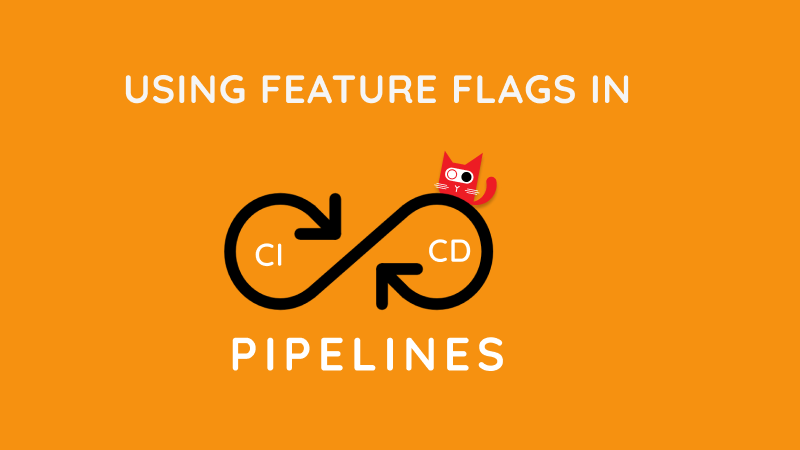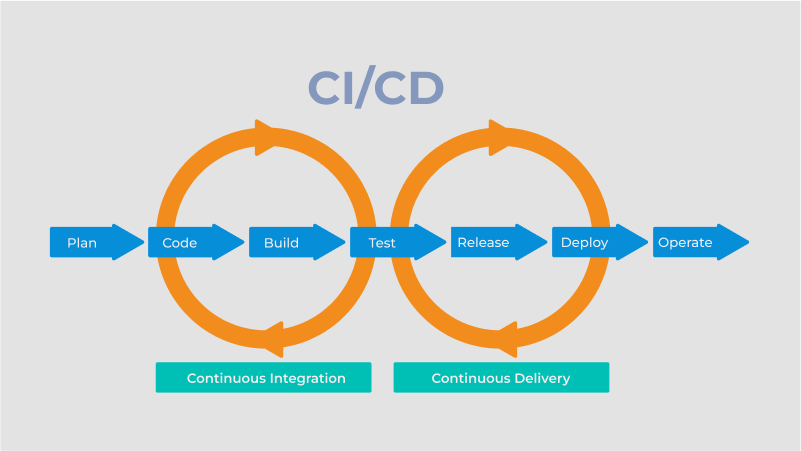Using feature flags in your CI/CD pipelines
Continuous Integration and Continuous Development/Deployment, most commonly abbreviated as CI/CD has changed and improved the way modern software is developed and shipped. When compared to traditional approaches which had a definite end, the CI/CD process is always ongoing with a strong emphasis on automation. As a result, new features and updates are steadily released to end users. This puts a huge overhead on developers and stakeholders to manage features efficiently. But, with the right feature management tool in place, this can be streamlined and simplified without much overhead, if any at all.

What are feature flags?
A feature flag is a boolean value that is linked to a feature in an application. It functions like a switch that allows you to turn features on or off without making edits or redeploying your app. When the boolean value is true, the feature can be rendered and shown to users and when the value is false the feature can be hidden.
CI/CD Pipelines
A CI/CD pipeline is a process for delivering a piece of software. It begins with planning and continues through deployment, then it is repeated many times over. Throughout this process, various automation tools are used to reduce the risk of human error. Among these tools are compilers, build tools, testing tools, code analysis tools, and deployment tools.

To make the release and management of new features seamless and easy for developers and companies, feature flagging can be integrated into CI/CD pipelines.
Reasons to use feature flags in your pipelines
Let's explore some reasons why you might want to consider implementing feature flagging in your CI/CD pipelines.
Release features quickly
The fact that each software feature or component can be directly linked to a feature flag allows you to control the feature without editing the code. If your app has already been deployed to production, you can release a new feature to users by turning on its flag.
Quickly rollback and refine features
If you find that a new feature introduces unforeseen bugs or issues, you can roll it back by setting the flag value to false and then back to true after the issues have been resolved.
A/B test new features
An often underrated benefit of using a feature flag is that it can be useful in streamlining an A/B testing experiment. As an example, you can configure the automatic release of two different variations of your app as part of your pipeline. The first variation can be deployed to 10% of users, and the second variation can be deployed to another 10%. By capturing metrics from each variation in your pipelines, you will be able to determine which variation meets end users' expectations. In this way, you can relieve some of the decision-making strain among stakeholders of the project, and thus deliver the best user experience.
Retiring feature flags
After a feature release is completed and permanently deployed, you can safely remove its feature flag or repurpose it for another feature. In scenarios where you forget to remove a feature flag, you can depend on ConfigCat's Zombie flag report to notify you via email about "stale" feature flags in your dashboard. Depending on your email preferences, this report can reach your inbox every week to help you manage your technical debts when it comes to feature flags.
My thoughts
In my opinion, using feature flags in your CI/CD pipelines is a game-changer when it comes to seamlessly deploying new features and decoupling updates and components that make up your software product or app. You can manage features easily with just a few clicks in your ConfigCat dashboard. But the benefits don't stop here, in circumstances where you want to target the release of features to specific user segments based on demographics and personal characteristics, the dashboard has got you covered. For example, rolling out a new feature only to users residing in Brazil.
Conclusion
Because of the flexible nature of feature flagging, It can be applied to many languages and frameworks. Feature flags are incredibly useful in situations where there are steady feature rollouts, canary deployments, and A/B testing as is often the case in CI/CD pipelines. With an easy-to-use feature management dashboard from ConfigCat, you have complete control over your features with a wide range of supported SDKs. If you haven't already, I highly recommend giving feature flags a try in your CI/CD pipelines.
Stay up-to-date
For more posts like this and other announcements, follow ConfigCat on Twitter, Facebook, LinkedIn, and GitHub.
